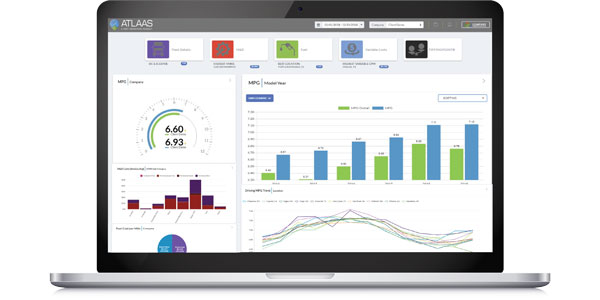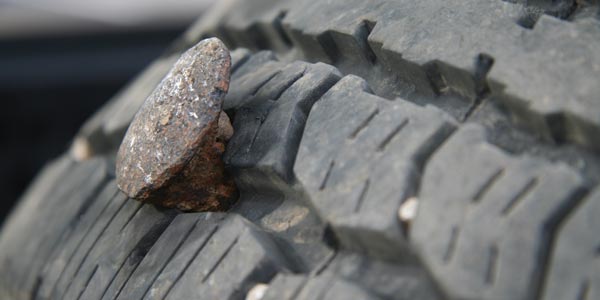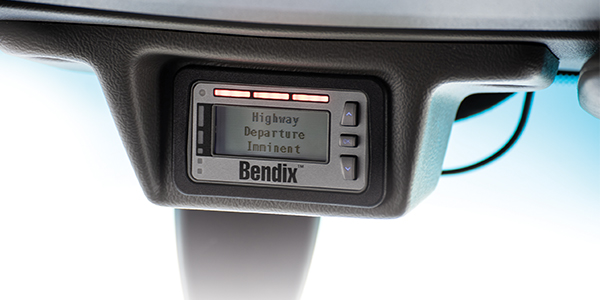The reasons to reduce truck idling are well known: Unnecessary idling is a major contributor to diesel fuel costs. 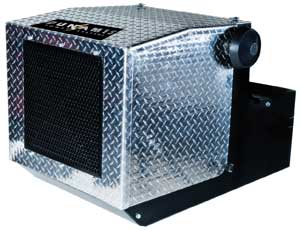 According to the U.S. Environmental Protection Agency (EPA), truck engine idling burns nearly one gallon of fuel per hour. With diesel prices hovering around record high levels, it’s not hard to see how that activity can be a significant cost for fleets.
According to the U.S. Environmental Protection Agency (EPA), truck engine idling burns nearly one gallon of fuel per hour. With diesel prices hovering around record high levels, it’s not hard to see how that activity can be a significant cost for fleets.
Truck idling is a cause of harmful emissions, as well as noise. That has led states, provinces, metropolitan areas and municipalities across the U.S. and Canada to enact strict regulations that limit the time trucks may idle. In many places, idling truck engines can carry huge fines and penalties.
At the same time, truck fleets continue to need to provide drivers with comfort and convenience during on-duty non-driving time periods. Rested drivers are not only safer drivers, cab comfort is also helpful in attracting and retaining drivers, keeping costs for those activities in check, as well.
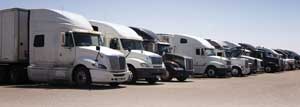
Idle reduction technologies
To meet all of these challenges—and to keep fuel costs as low as possible—fleets can specify a variety of on-board auxiliary systems offered by truck OEMs as original equipment, and from a variety of manufacturers for new and aftermarket installation.
The U.S. Environmental Protection Agency, as part of the SmartWay Transport Partnership, has evaluated idle reduction technologies to study the effects of idling on air quality, fuel consumption and driver health. Based on its research, EPA has verified a variety of idle reduction technologies that save fuel, reduce emissions and enhance driver comfort.
These technologies include auxiliary power units (APUs), which provide air conditioning, heat and electrical power to run accessories like lights and on-board equipment. Also covered by EPA are auxiliary heaters that burn fuel from the main engine fuel supply or a separate reserve to provide heat.
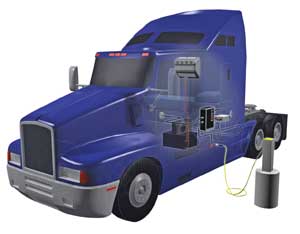
EPA has also identified two other viable types of technologies. Included are battery air conditioning systems that power independent electric cooling systems and are typically integrated with an auxiliary heater. In addition, the agency has tested thermal storage systems that can collect heat energy as a truck is driven and use it to provide air conditioning while the engine is off.
Idle reduction through technology, EPA also says, can be complemented by working to change driver behavior. In addition to addressing anti-idling regulations, for example, drivers should be “educated about the impacts and adverse effects of long-duration idling. Fleet owners can also offer financial incentives to drivers to reduce idling,” the agency notes, “and many large trucking companies have reported success in reducing idling times below national averages by instituting a company ‘no-idling’ policy.”
Plugging in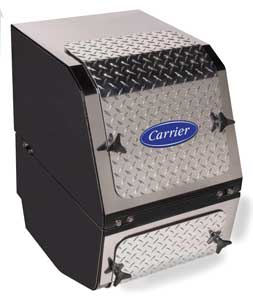
EPA’s efforts to identify idle reduction solutions also covers electrified parking spaces or systems that can provide electrically-powered equipment, including heating and cooling, electricity for on-board systems, or a combination of the two.
Truck manufacturers are now incorporating equipment that can use shore power into their vehicles. In addition, many anti-idle solutions with shore power connectivity are available on the aftermarket.
Shorepower Technologies, a transportation electrification infrastructure company, and non-profit organizations like Cascade Sierra Solutions are working on building a network of truck stops to give fleets access to these services along the nation’s highway freight corridors.
As the manager of a U.S. Department of Energy grant for the Shorepower Technologies Electrification Project (STEP), Cascade Sierra Solutions is now bringing power pedestals to truck stops and assisting fleets in equipping their vehicles to take advantage of them. STEP includes more than $10 million in idle reduction equipment rebates for devices on medium- and heavy-duty diesel trucks that incorporate electric standby operation or run on battery power to eliminate engine idling during mandated rest periods.
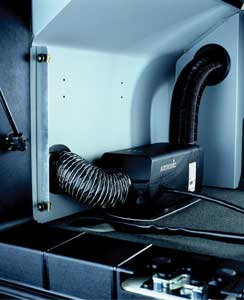
Individual rebates can be as much as 20% of the installed equipment price. The rebates are available to long-haul vehicle fleets operating in any of the lower 48 states (with a maximum of 25 rebates per fleet). Equipment purchases must be pre-authorized by Cascade Sierra Solutions with a rebate certificate prior to installation. Equipment to be installed must be able to hook up to the power grid when the vehicle is at rest, (electric standby) or operate on battery, and must be listed as a SmartWay verified technology on the EPA’s website or have received specific authorization from the program.
Fleets taking advantage of this program must agree to keep rebated equipment in service, and to use STEP project electrified truck parking,where available, until June 2014. Companies receiving rebates also agree to provide summary vehicle profile and operating data for project reporting to the U. S. Department of Energy.
Types of equipment eligible for the rebates, and maximum rebates, include:
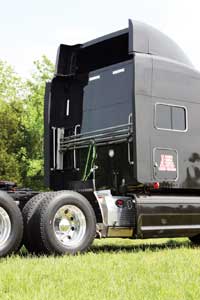
•Auxiliary power units or generator sets with electric standby—$2,000
•Battery HVAC systems—$1,600
•Battery evaporative cooler systems—$700
•Thermal storage systems—$260
•Straight truck cold plate and refrigeration systems—$3,200
•Trailer refrigeration units with electric standby—$5,000
•Hybrid refrigeration units with electric standby—$5,000
The first installation of Truck Stop Electrification (TSE) under STEP took place at a truck stop in Baker City, Ore. Twenty-four truck parking spaces at Baker Truck Corral are now equipped with electrical service. The pedestals provide 120, 208 or 240 VAC power sources. Power and cable TV access are available at $1 per hour, with wireless Internet available for an additional charge. Access and payment can be handled with a card, smartphone, laptop or telephone activation system.
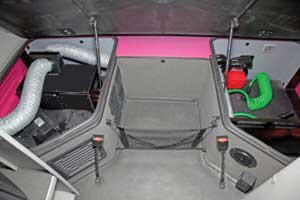
Chris Olson, owner and operator of SOS Transportation, based in Carlton, Ore., has been a supporter of shore power since 2003, when he added the first shore power-ready truck to his fleet. Today, 75% of the vehicles in his company’s fleet are equipped to connect with shore power, and all new trucks the company buys will be equipped, as well.
“Connecting to shore power instead of idling is significantly quieter and easier on our drivers,” Olson says. “TSE is a great boon to our company and the trucking industry in general, and we hope to see it implemented in even more stops across our nation.”
The STEP program will add 1,200 electrified spaces at 50 locations over the next 12 to 18 months. Shorepower Technologies has already installed about 400 electrified spaces at 10 truck stops. Its five-year goal is to have 250 locations and long-term hopes are for 500 to 1,500 locations around the country. Shorepower also says its systems could be installed at rest areas, warehouses, truck terminals and other parking areas.
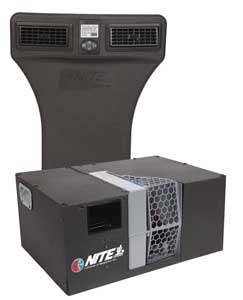
“STEP offers the trucking industry collaborative solutions to complex fuel economy challenges,” says Dave Orton, marketing communications manager for Cascade Sierra Solutions. “Through investments in truck upgrades, fleets can reduce a major operating expense while improving the health and driving experience for their drivers.”
For fleets, alternatives to idling range in cost from a minimal investment to several thousand dollars. Adopting technologies that provide for driver comfort while eliminating engine idling—and working with drivers to ensure compliance—can save money on fuel and engine maintenance, and reduce the negative effects of emissions and engine noise.
Keen Focus
Intent on staying at the forefront of technology, Boaty’s Produce is using advanced refrigeration and idle reduction solutions.
Founded in 1990 by Michael Boatwright with one tractor-trailer, Georgia-based Boaty’s Produce Inc. has grown into a company with 116 refrigerated trailers. In order to reduce fuel and operating costs, as well as harmful emissions, company president Boatwright explains the company is focusing on idle reduction in its tractors, as well as refrigeration units.
Today, more than half of the Boaty’s Produce fleet operates with Thermo King’s TriPac Auxiliary Power Units (APUs). “We’ve made significant investments in this idle reduction technology,” Boatwright relates. “By reducing truck idle time to less than 5% annually, we’ve noticed significant savings in maintenance costs and fuel consumption. Instead of the one or two gallons burned per hour with the tractor engine idling, the TriPac systems use about 90% less fuel. That can add about six cents per mile back to our bottom line.”
Another way Boaty’s has been cutting fuel costs and reducing emissions is by specifying SmartPower electric standby systems on its Thermo King SB-210+ refrigeration units. With these systems, the unit plugs into an electrical outlet at the loading dock rather than running on diesel power. The unit automatically switches to electric operation when the power cord is connected and standby power is switched on. If the electric power is interrupted, the unit will switch back to diesel power to protect the load.
Resources
1. Auxiliary Power Dynamics: www.willisapu.com
2. Bergstrom: www.bergstrominc.com
3. Carrier Transicold: www.trucktrailer.carrier.com
4. Dometic Environmental Corp.: www.dometicusa.com
5. Dunamis Group LLC: www.promaxapu.com
6. Espar Products: www.espar.com
7. Glacier Bay: www.glacierbaytechnology.com
8. Kohler: www.kohlerpower.com
9. Pony Pack: www.ponypack.com
10. Red Dot Corp.: www.reddotcorp.com
11. Teleflex Power Systems: www.teleflexpower.com
12. Thermo King: www.thermoking.com
13. Webasto Product N.A.: www.bluecooltruck.com
14. Smartway Transportation Partnership, U.S. EPA
15. Fleetsmart, National Resources Energy Canada
16. American Transportation Research Institute, U.S. Idling Regulations: www.atri-online.org
17. Natural Resources Canada FleetSmart, Canadian Idling Restrictions
18. Cascade Sierra/Shorepower Technologies/STEP program











